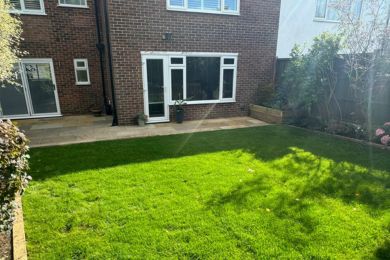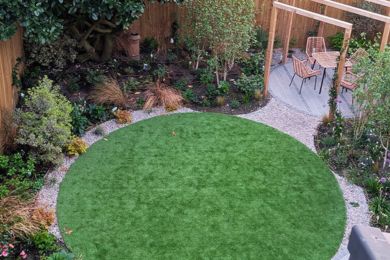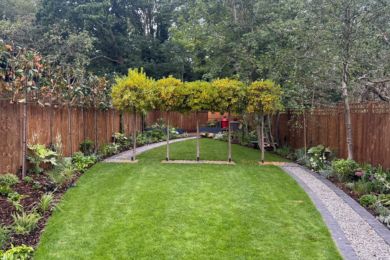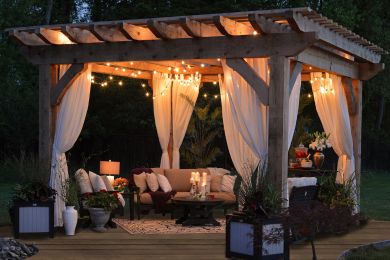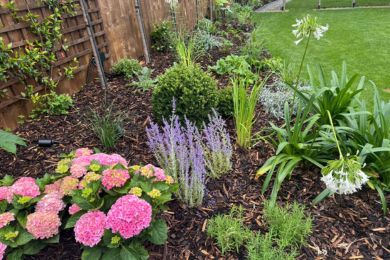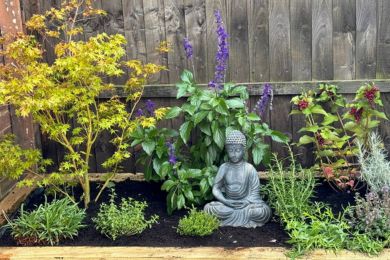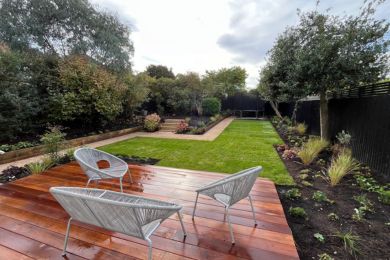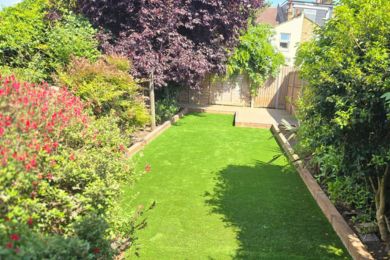How To Create Wildlife-Friendly Gardens
Wildlife-friendly gardening is increasing in popularity across the region, with many people opting to use their own private gardens as hubs for the local ecosystems. Now, more than ever, it is vital for us to play a role in sustaining the environment, and our gardens can play a huge role on a regional scale.
With some simple tweaks and landscaping additions, you too can create your own wildlife-friendly garden that allows birds, bees and other essential critters to remain fed, hydrated and healthy so they can provide ongoing support to the environment.
As a premier landscaping company, SilvaTree understands the role each garden can play in supporting local ecosystems and sustainability goals. We aim to create outdoor spaces that don’t just look good, but do good for the region and surrounding ecosystems.
In this post, we are sharing some features that make up wildlife-friendly gardens and how you can create one of your own.
The Importance Of Native Plants In Wildlife-Friendly Gardens
Native plants are the foundation for wildlife-friendly plants and will vary across the country.
Native plants are those which organically grow in the region’s climate and conditions, and are therefore a vital part of the ecosystem. For SilvaTree clients, considering the traditional British wildflowers and hedge species, such as dog rose, primrose, elderberry, and Silver Birch trees, can be a great way to generate wildlife-friendly gardens.
While the history of some plants may show that it has travelled countries before finding a home in the United Kingdom, over the years, species have developed and adapted to suit the organic climates of the island and are therefore now considered native species.
Wildlife-friendly gardens centre around native plants, flowers and shrubs because these specific plants can offer support to the ecosystem. This support is provided in several ways, including the local history of the plant and how it is primed to thrive in your specific landscape.
Due to the fact that they are found and therefore thrive in the local conditions, these plants do not require ongoing maintenance through fertilisers and other harmful chemicals. These treatments, often required to keep your garden healthy and looking its best, pollute the atmosphere and reduce the chances of wildlife in your surroundings. Native plants eradicate this need, allowing you to cultivate a healthy and thriving garden without the effort.
Native plants, specifically local wildflowers and pollinators, are great for bees, who play a major role in supporting all kinds of ecosystems. Without the constant pollination from bees, which can spread across flowers, trees and other plants, the ecosystem would collapse, leading to a loss of plants and wildlife.
Incorporating a seasonal mix of native plants ensures that you maintain your wildlife-friendly garden all year round and continue to play a role in supporting local ecosystems.
Key Areas Of Wildlife-Friendly Gardens: What To Include
As well as native plants and flowers, there are various other landscaping elements you can incorporate into your garden design to create a wildlife haven. These include:
Water Features
Wildlife-friendly gardens need to include water features, because this can provide both hydration and habitats to a range of creatures. Common water features include bird baths or shallow ponds, which allow all kinds of local birds to drink, bathe and cool down during the hot summer temperatures.
Ponds and similar water features may also become habitats for local frogs, as well as attracting a healthy stream of insects, which can be food for other creatures. To ensure these spaces are accessible to the creatures you want to attract, include stones or ramps around the pond or water features.
When including water features in your wildlife-friendly garden, avoid using chemicals or pesticides near them as this will pollute the water, causing damage to creatures and surrounding plants. If you opt for a bird bath or shallow water bowl, make sure to regularly clean and change the water to ensure a constant healthy supply for surrounding wildlife.
Pollinator Plants
As we have mentioned, plants play a huge role in wildlife-friendly gardens. Alongside native plants, nectar-rich plants such as cornflower, lavender and foxglove will attract bees to your garden, giving them more fuel and supplies to continue their pollination across the ecosystem.
These plants make your garden come alive in the spring and summer. Not only are they highly attractive, but produce beautiful scents and attract bees all season long, so your garden remains alive with promise and appeal.
It is recommended to plant pollinators like this in clusters, such as a flower bed or raised planter, to ensure easy access to as much pollen as required. It also makes it easy for you to keep pollinators away from children or pets by separating the zone for these insects from the rest of the garden.
To prolong the benefits of wildlife-friendly gardens, consider including both early and late blooming species in your garden. For example, peonies and bellflowers bloom early to encourage pollinators into your garden with the seasonal changes, and should be planted alongside late-blooming sunflowers and Michaelmas daisies to prolong the pollination process.
Habitats For Insects and Animals
Creating or buying specific habitats for insects and animals is a great way to adorn wildlife-friendly gardens, and can be an activity for the whole family. Insect hotels, built using natural materials, can provide shelter and habitats to a range of critters.
They can be purchased from home or garden stores, or alternatively, you can make your own. This is a great spring-time activity for children of varying ages, and encourages them to begin learning about the environment from an early age.
Insect hotels should be installed close to flowers, especially if you have edible plants like vegetables and herbs in your garden. This ensures they attract the most creatures and provide essential shelter when needed.
Other great form of wildlife habitats includes bird houses, which can be installed in trees, shrubs or in a stake in the ground, as well as bee stakes, which should be added in flower beds.
As well as creating areas for specific creatures, you can create a wildlife centre or corner in your garden to appeal to all. Allow the grass to grow freely, encourage wildflowers and pollinators to go wild and maintain the local soil conditions in a corner of your garden to create a small meadow. Not only will this allow plant life to thrive, but also attract a wide range of animals and insects from across the area into your garden for food, shelter and hydration.
Wildlife corners can also be created using piled logs, which can attract a range of insects, as well as stones and hollow stems. These provide vital shelter to insects, and animals such as hedgehogs, frogs and beetles.
Bringing It All Together: Where Style Meets Sustainability
Creating wildlife-friendly gardens does not necessarily mean having to forgo attractive garden design. It is possible to create a sustainable and stylish outdoor space that perfectly aligns with your personal style and values.
The key to creating attractive, wildlife-friendly gardens lies in placement. The layout of your landscape determines whether it has a cohesive style or looks unorganised and mismatched.
You can use a combination of organic and natural materials, alongside traditional landscaping installations such as paving or stones, to create separate zones in the garden. Separate your wildflower beds from the patio seating area, or the overgrown grass meadow from the turfed play area, using structural elements to ensure a cohesive flow.
If you are not quite ready to commit to a complete wildlife-friendly garden, but still want to make a difference, small changes are possible. Sometimes, it is the smallest changes that can have the biggest impact, and you too can play a role in sustainability with a neat, stylish garden.
Simply adding native plants, or pollinator-friendly flowers to your regular pots and flower beds or adding a water feature as a focal point can create more wildlife-friendly areas in your garden, without interfering with your garden design.
Based on your location and the kind of wildlife you want to attract, there are various ways you can incorporate sustainable elements into your landscape. SilvaTree is committed to sustainable practices and will work with you to make the best choices for your garden and the surrounding ecosystems.
Conclusion
Wildlife-friendly gardens are centred on creating habitats and safe environments for local creatures. Insects and animals need our support as much as anything else, and your garden can make a huge difference.
Incorporating wildlife-friendly features, such as water bowls or bird baths, native plants and pollinators, can help support ecosystems. If you have a goal to become more sustainable, your garden is a great place to start – and it doesn’t have to come at the expense of garden design.
SilvaTree is a leading landscaping company serving London and the Home Counties that can help you reach these goals. We offer extensive landscaping and garden design services, working directly with clients to create their ideal outdoor spaces for their homes and lifestyles. We are passionate about environmental conservation and use sustainable practices across our services to support our local ecosystems.
Contact Us Today
If you are looking to transform your garden, you have come to the right place. Our team is ready to take on your next project and offers a range of services to support you. Contact us today to learn more or request a consultation.
